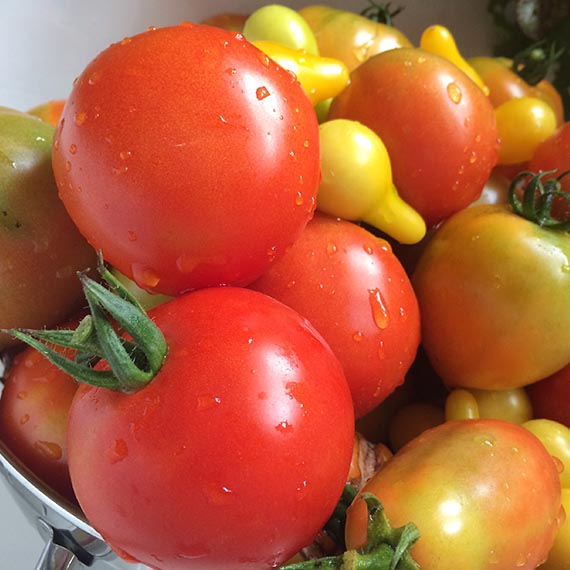
CSA – What is it?
 CSA stands for Community Supported Agriculture.
CSA stands for Community Supported Agriculture.
It’s a practice that allows consumers to directly contribute to the success and quality of their food source.
Early in the season, customers buy a share which gives them a preset portion (box, bag, crate, etc.) of the farm’s bounty for the duration of the contract. For vegetables, it’s generally 20-22 weeks, spring – fall. There are also other types of CSAs like meat, eggs, honey or even combination CSAs.
By investing in a CSA, your yearly investment will come out to be less (often a lot less) than the same produce from a grocery. Off-the-farm produce is fresher, tastier and richer in nutrients. Local vegetables offer more varieties because they don’t have to survive long pick-to-table delays and the rigors of commercial shipping.
The CSA produce is often picked the day you get your share!
This early-season investment gives the farmer capital, and it gives them a good idea of how much to plant to meet the CSA needs. So, it’s a win, win for both the customer and the farmer.
Where a CSA can sometimes go wonky is if the growing or produce is impacted by weather, natural disasters, etc. Hail storms, drought, flooding, parasites, delivery truck with half the CSA boxes in it gets hijacked, etc. all mean a customer doesn’t get their produce that week, or the amount or variety might be reduced.
I’ve invested in CSAs several times, and I never had any issues with quality or amounts. While issues can come up, they are not the standard.
Here are some things to consider when signing up with a CSA:
- Not everything in the box will be familiar, so be okay with staring at it, Google it, and then finding a recipe on how to cook it.
- In general, a share is designed to be consumed that week. If you really want to try awesome veggies, but know your time and pallet limitations, consider splitting a share with a friend or two. You will get frustrated if your money goes to waste.
- Enjoy being creative and planning meals on the fly. I loved staring into my newly picked up box and thinking up tasty meal combinations. If you like to plan your meals in detail, a CSA might not be for you.
- Get to know your farmer! We regularly communicate through social media about the farm, the animals, our lives and how the gardening is going. We will also be posting vegetable descriptions and recipes, especially for those veggies that might not be as common.
- We also want to hear from you, learn about your lives, and see what you are making with the produce. We are in this together!!
CSAs are fun, delicious and an investment in your community, and we look forward to working with you.
Note: since we are still getting our farming feet under us, we will be offering a modified CSA this year. We want to make sure our customers don’t pay a price for our newbieness. Details to come…

 Hey, we're Erin & Jason
In addition to our own, there are 44 other four-legged friends here, and we all like great tasting food!! So for us, growing it makes sense.
Hey, we're Erin & Jason
In addition to our own, there are 44 other four-legged friends here, and we all like great tasting food!! So for us, growing it makes sense.

About the author